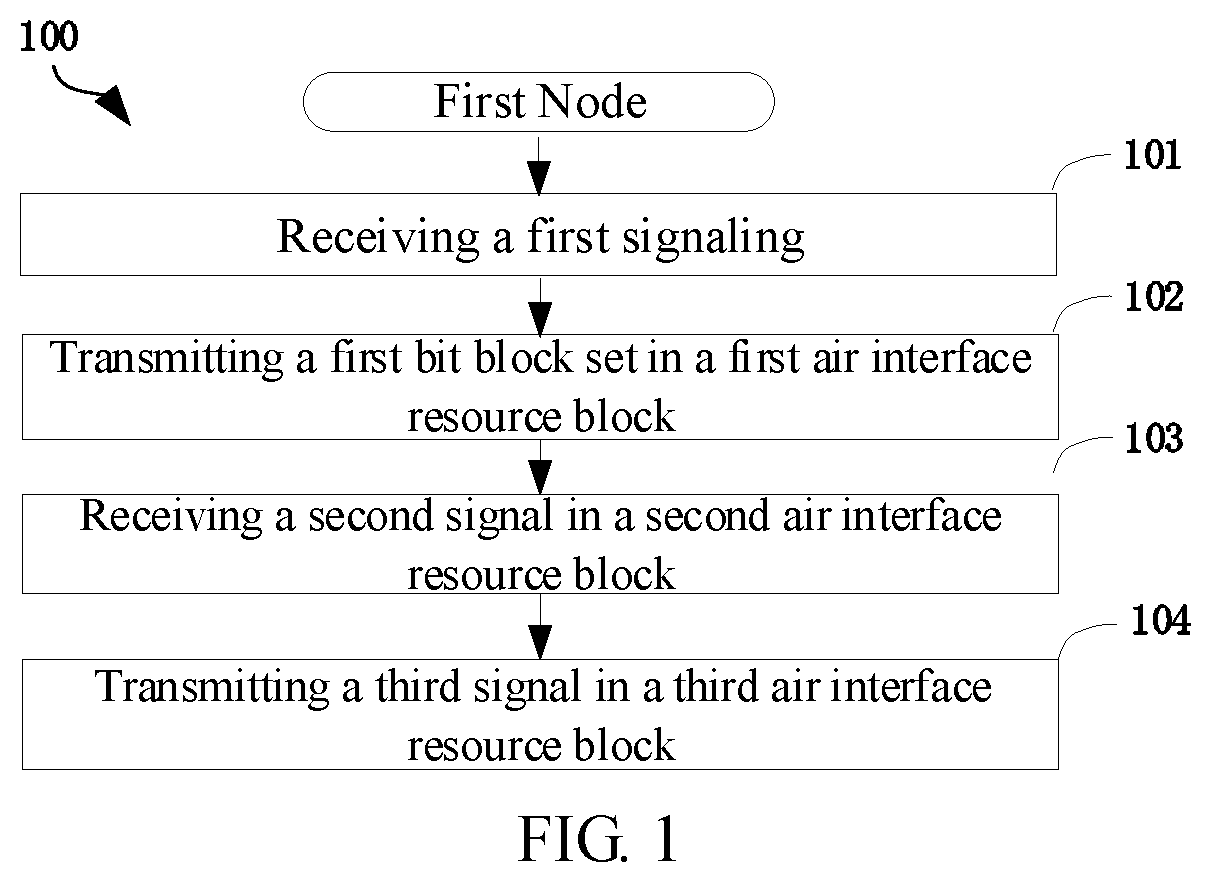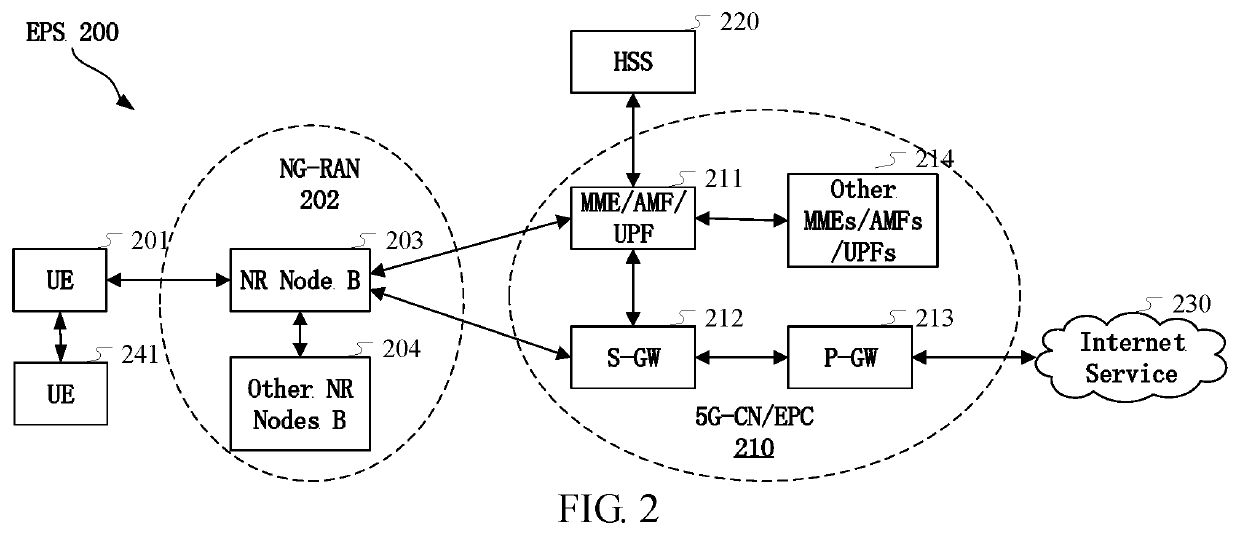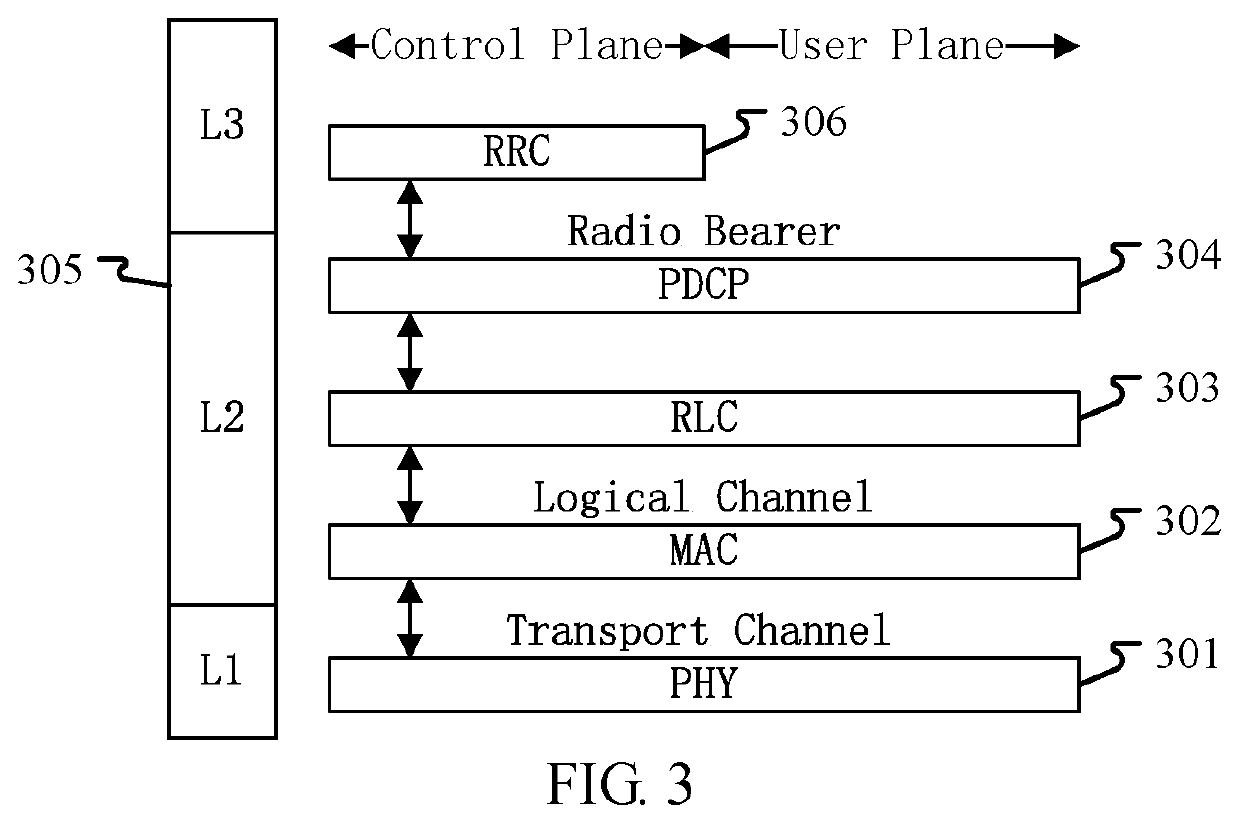Method and device in communication node used for wireless communication
- Summary
- Abstract
- Description
- Claims
- Application Information
AI Technical Summary
Benefits of technology
Problems solved by technology
Method used
Image
Examples
embodiment 1
[0121]Embodiment 1 illustrates a flowchart of a first signaling, a first bit block set, a second signal and a third signal according to one embodiment of the disclosure, as shown in FIG. 1. In 100 shown in FIG. 1, each box represents one step. Particularly, the order of steps in the box does not represent a specific time sequence between each step.
[0122]In Embodiment 1, the first node in the disclosure receives a first signaling in S101, transmits a first bit block set in a first air interface resource block in S102, receives a second signal in a second air interface resource block in S103, transmits a third signal in a third air interface resource block in S104. Herein, the first signaling is used for determining the first air interface resource block, and the first air interface resource block is used for determining the second air interface resource block; the second signal indicates whether the first bit block set is correctly received; the second signal is used for determining ...
embodiment 2
[0189]Embodiment 2 illustrates a diagram of a network architecture according to one embodiment of the disclosure, as shown in FIG. 2.
[0190]FIG. 2 is a diagram illustrating a network architecture 200 of Long-Term Evolution (LTE), Long-Term Evolution Advanced (LTE-A) and future 5G systems. The network architecture 200 of the LTE, LTE-A and future 5G systems may be called an Evolved Packet System (EPS) 200. The EPS 200 may include one or more UEs 201, one UE 241 in sidelink communication with the UE 201, a Next Generation-Radio Access Network (NG-RAN) 202, an 5G-Core Network / Evolved Packet Core (5G-CN / EPC) 210, a Home Subscriber Server (HSS) 220 and an Internet service 230. The EPS may be interconnected with other access networks. For simple description, the entities / interfaces are not shown. As shown in FIG. 2, the EPS provides packet switching services. Those skilled in the art are easy to understand that various concepts presented throughout the disclosure can be extended to network...
embodiment 3
[0212]Embodiment 3 illustrates a diagram of an embodiment of a radio protocol architecture of a user plane and a control plane according to the disclosure, as shown in FIG. 3.
[0213]FIG. 3 is a diagram illustrating an embodiment of a radio protocol architecture of a user plane and a control plane. In FIG. 3, the radio protocol architecture of a UE and a gNB is illustrated by three layers, which are a Layer 1, a Layer 2 and a Layer 3 respectively. The Layer 1 (L1 layer) 301 is the lowest layer and implements various PHY (physical layer) signal processing functions. The L1 layer will be referred to herein as the PHY 301. The Layer 2 (L2 layer) 305 is above the PHY 301, and is responsible for the link between the UE and the gNB over the PHY 301. In the user plane, the L2 layer 305 includes a Medium Access Control (MAC) sublayer 302, a Radio Link Control (RLC) sublayer 303, and a Packet Data Convergence Protocol (PDCP) sublayer 304, which are terminated at the gNB on the network side. Al...
PUM
 Login to View More
Login to View More Abstract
Description
Claims
Application Information
 Login to View More
Login to View More - R&D
- Intellectual Property
- Life Sciences
- Materials
- Tech Scout
- Unparalleled Data Quality
- Higher Quality Content
- 60% Fewer Hallucinations
Browse by: Latest US Patents, China's latest patents, Technical Efficacy Thesaurus, Application Domain, Technology Topic, Popular Technical Reports.
© 2025 PatSnap. All rights reserved.Legal|Privacy policy|Modern Slavery Act Transparency Statement|Sitemap|About US| Contact US: help@patsnap.com



